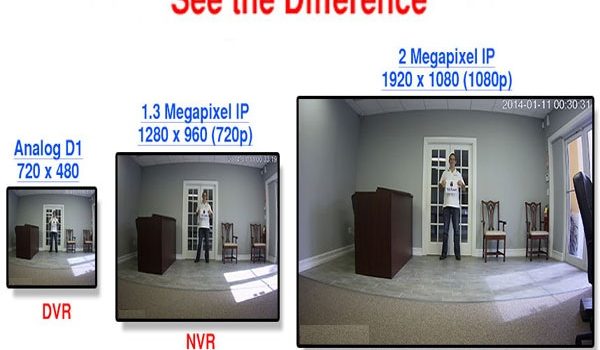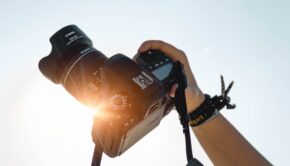Right Resolution for Your Surveillance Camera
The most challenging task while choosing the right video security camera is to decide upon the right resolution. So, let us first understand a little about resolution.
A word about resolution:
The term resolution refers to the number of pixels, or the smallest picture elements contained on the display. The more the pixel elements, better would be the picture quality. If we discuss about analog cameras, resolution is usually measured in Television lines (aka, TVL), whereas display in digital cameras is typically measured in pixel-density and understood either by the number of pixels vertically & horizontally (like 640×480) or as a total number of pixels in the image (like 1.4 megapixels).
The role of the pixel-density is to capture light and convert into data. That data can be made up of both good and bad information. The bad information is what we refer to as “noise”, which results in lower color saturation and grainy look of the image. The pixel-density varies from device to device and hence, while purchasing, you need to give it a serious thought.
Pixels Per Foot (PPF)
Pixel per Foot, also known as PPF measurement, is often used to determine the call for the surveillance system. This is similar to the camera resolution, but it refers to the resolution of the final video produced based on the size of the area where the video was recorded. PPF helps the system designers in figuring out the type and the numbers of cameras that are required for a particular place.
For instance, a rule of thumb is that at least you require a cam with 800 pixels wide display for the facial recognition.
By all means, the distance between the cameras and the area to be observed matters a lot. To acquire a final video display of 40 PPF, the distance between the camera and subject should be large enough. The more the distance between these two (cam and the subject), the more will be the camera resolution required. This is where the lenses and field of view play an important role. For instance, to cover the 10 foot wall on either side or 20 foot opening, the total area coverage required would increase to 40 feet, signifying that the cam resolution you’ll require would be at least 1600 pixels wide in order to keep those 40 PPF video resolutions.
More Cameras or More Megapixels?
So, what in case if you want to cover and record complete 40 foot area? In that case, if you used a single cam, with resolution 800×600, the final video resolution you will have would be 20 PPF. And, this display is not satisfactory and reliable to recognize a face. Therefore, the two options that you can go for are either to use a single camera with 1.9 megapixels, or you can divide the viewing area between the two smaller cams, each focusing on a 20 feet of area. At first glimpse you may be inclined towards the least expensive option, i.e. the two standard IP cameras; this is because of the lesser price of standard digital cams over megapixel cams. However, in the long run, replacing multiple IP cameras with a single megapixel cam would turn out to be a better option.
Conclusion:
There are a lot many calculations and trade-offs that needs to be done before you conclude the final design of a surveillance system with the best resolution. And, what we have listed above, is just a fraction of these calculations and trade-offs. Therefore, choosing the right cam is what all you need to do.
HD security is the decent choice when it comes to security these days. This is so because the image quality extended by HD cameras is just superb. They can perform facial recognition by capturing faces, clothes, etc., and can also record the license plate number of vehicles in the parking lots. Besides all this, you can also review the recorded footage to substantiate. HD cameras are offered by various manufacturers in numerous styles, so don’t think much and enhance your existing surveillance system to HD today.
Author Bio:
Ted Yu is a gadget wizard, an active blogger, and an eminent speaker. With more than 10 years of experience to his credit, Ted has always been a pertinent contributor to the security industry. He is sharing these business security tips on behalf of Revo America, a well renowned security products manufacturer and retailer.
















